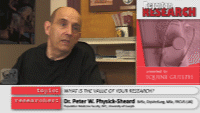ARCHIVE EQUINE NEWS STORIES
| Current news is available at TheHorsePortal.ca, Equine Guelph's online learning platform for practical, quick learning. Given the vast amount of information on horse health and welfare, Equine Guelph has archived its past news articles from 2002-2020. They are listed below, along with a search function available to find specific healthcare topics. | |
The Beat Goes On- Report on Research Studying Heart Disturbances in HorsesJanuary 2012
Click here for Report on Research Video Volume 1
by Jackie Bellamy
Normal heart rhythm and sounds in a horse are difficult to define because of the fascinating array of strange sounds and rhythms which can be found in apparently healthy animals and which change with exercise. Also, even when sounds or rhythms do reflect heart problems, most horse owners will not notice signs, until there is an inability to perform work at a level previously achieved successfully, when the horse shows an unusual tendency to tire.
Owners of performance horses understand the economic impact of a horse that can no longer work, or in the worst-case scenario, where sudden loss becomes a serious issue. University of Guelph researcher Dr. Physick-Sheard states, “After safety issues and welfare issues are discussed there is still a need to put an economic value on the horse, which is decided by the client”. One aspect of research Dr. Physick-Sheard and Dr. Kim McGurrin look at is atrial fibrillation, the most common clinically significant rhythm disturbance horses can have. An arrhythmia is technically defined as an abnormal heart rhythm, however, irregular heart rhythm is commonplace in horses and the endeavor to define normal, continues to be a complex and fascinating journey. A completely steady rhythm can be considered abnormal.
Before a diagnosis of heart problems can be made, Dr. Physick-Sheard explains, a logical process where the client is asked the history of the horse (breed, use, how long it has been in training) is followed before conducting a general physical examination. Future use would also be discussed before deciding on diagnostics. An Electrocardiogram may be the next step to determine the heart’s rhythm and possibly an ultrasound to look at how efficiently the muscle and valves work. They look for enlargement or abnormal structure in the heart and check for normal blood flow around the valves.
Dr. Physick-Sheard describes two types of rhythm disturbance that can be found: 1. Benign variations on normal (mostly involving the top part of the heart). 2. Ventricular rhythm disturbances, which can be serious and even life threatening. When found, they look first for problems outside the heart, disturbances in homoeostasis, which involves keeping the environment around cells constant: dehydration, electrolyte and acid base imbalance. Under these circumstances secondary arrhythmias are often detected. Situations where the cardiac problem is primary are rare but sometimes serious.
McGurrin and Physick-Sheard have had enormous success treating arrhythmia with transvenous electrical cardioversion. The response rate has been 100%! Electrodes are placed into the heart to deliver an electric shock, while the horse is under anesthesia, to convert the rhythm to normal.
Dr. McGurrin and Dr. Physick-Sheard developed this technique before their first Standardbred track study, where they collected heart rhythm data during racing using an electrocardiogram. Dr. Physick-Sheard explains how the technology works, “The heart is a bag of muscle, a slave pump which does what the system tells it, contracting at a rate that reflects the body’s needs. The heart gives off an electrical signal when it contracts which reaches the skin and can be detected by the electrocardiogram (ECG). This is then used to monitor heart rhythm.”
Dr. Physick-Sheard has developed specialized equipment and software for the current intensive Thoroughbred study which he is hoping will give more insights into causes of sudden death.
Dr. Physick-Sheard's research funding has been provided by Equine Guelph and Grayson Jockey Club Foundation.
Read - Peter W. Physick-Sheard biography
Funding for the Report on Research and Help for Horseowners videos has been provided by the Knowledge Translation and Transfer Program under the OMAFRA-U of G Partnership.

